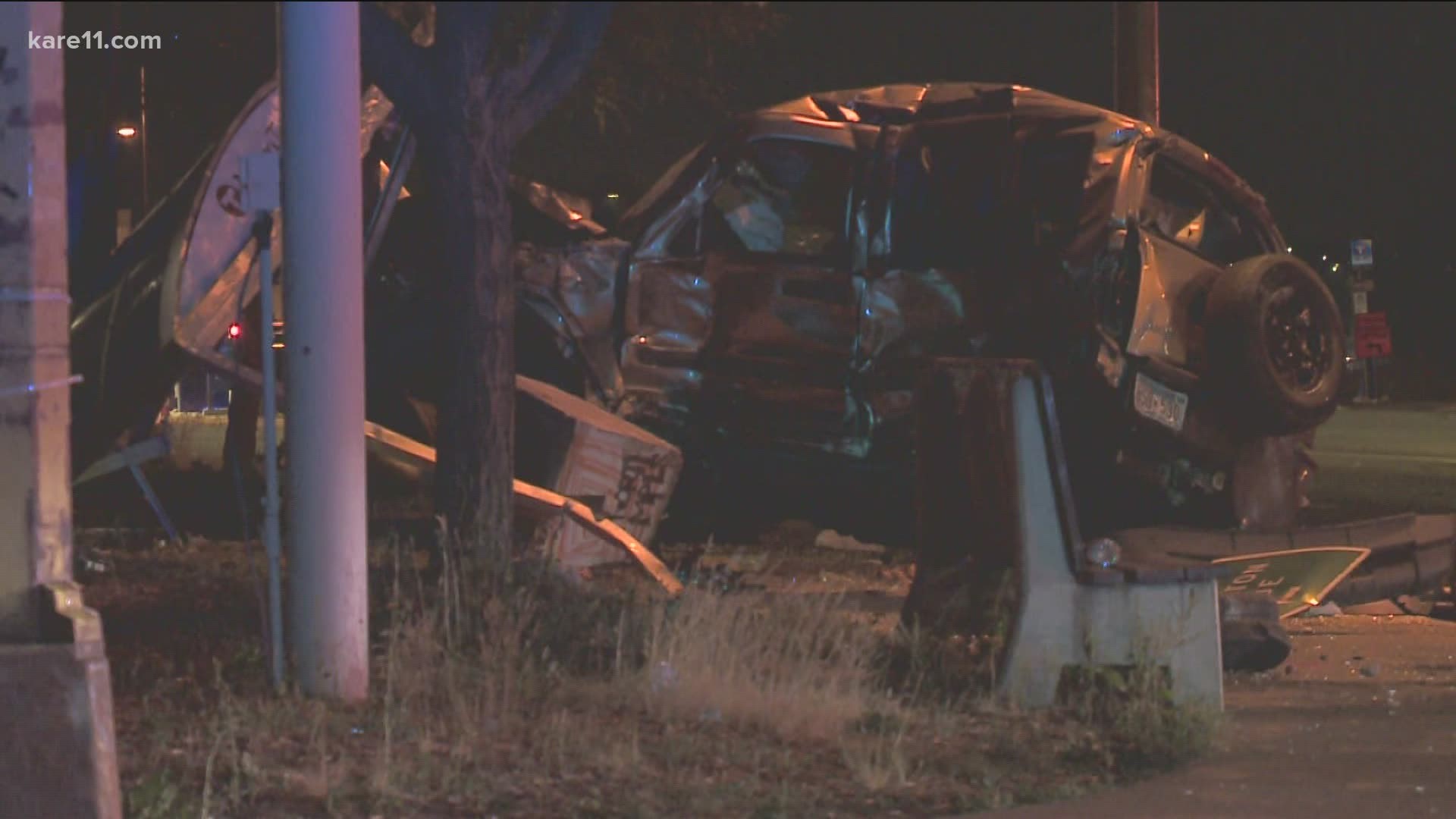MINNEAPOLIS — Police pursuit policies are under the microscope again, in the wake of the death of an innocent motorist hit by an officer conducting a high-speed chase on the city's north side.
Leneal Lamont Frazier, a 40-year-old of St. Paul, lost his life because he happened to be driving through the intersection of Lyndale Avenue and 41st Avenue North at the worst possible moment early Tuesday morning.
His car was hit by Officer Brian Cummings, a K9 officer, as he was driving northbound on Lyndale Avenue chasing a vehicle that had, according to initial police reports, been linked to a carjacking and several business robberies.
Officer Cummings also suffered serious injuries but is expected to survive. The status of his canine partner is unknown. The Minnesota State Patrol is investigating the crash and circumstances that led to it.
The City of Minneapolis updated its police pursuit policies in 2019, the same year Jose Madrid Salcido, a father of four, was killed by a man fleeing police in the intersection of Aldrich Avenue and 36th Avenue North. In that case the chase began when the suspect, Trevon McMorris, suddenly drove off after being stopped by officers on suspicion of selling drugs.
Ultimately, it's up to the officer to decide when to initiate a chase, and it's up to the officer or supervisors to decide when to break away from it. Generally, the department requires officers to believe one of the following:
- The driver is linked to a violent felony or gross misdemeanor
- The driver is about to commit a violent crime
- The person is driving in such a flagrantly reckless way they're putting bystanders and their own passengers in danger
The crimes listed in the policy include murder, sex crimes, robberies, arson, kidnapping, carjacking, 1st and 2nd degree assault and terrorist acts.
Civil lawsuits extremely difficult
Robert Bennett, a veteran Minneapolis attorney who has specialized in police misconduct cases, said it's extremely difficult to hold police officers or their departments financially responsible for deaths and injuries that arise from police chases.
"All of the stories that I've heard without exception have been horribly tragic and it's no fun to tell somebody that you don't have any remedy for that through the courts," Bennett told KARE.
The Minnesota Supreme Court ruled in the Pletan vs. Gaines case that officers have immunity from lawsuits involving chases gone wrong. The high court went even further to say the cities those officers work for are also immune from civil liability.
That 1992 decision was based the 1987 chase that claimed the life of Shawn Pletan, a 7-year-old Robbinsdale boy. He had just gotten off his school bus and started to walk to home when he was struck by Kevin Gaines, who was fleeing Crystal Police Officer Boyd Barrett.
That chase began with a report that Gaines had shoplifted clothing from a retail store.
Federal court ruling
After that door was closed lawyers put their hopes in the federal court system, but that too ended up being a dead end. The 8th Circuit Court of Appeals, in a 2000 decision in Helseth vs. Burch, ruled that officers can only be held liable for outright criminal behavior during a chase.
"As an officer you'd need to have criminal intent to hurt the person you're chasing without regard for whether you arrest them or not. It's an impossibly high standard. It’s hard to imagine a hypothetical that would fit it."
That precedent-setting federal case arose from a 1995 chase in Blaine. Officers were chasing Everett Contois when he struck a pickup truck being driven by Timothy Helseth. The impact left Helseth a quadriplegic and killed his passenger.
"In that case, the chase when through backyards of neighborhoods, people sleeping in bedrooms that were barely missed. It was crazy," Bennett remarked.
"Officer Burch had been ramming the suspect's car from behind during the chase. The car ended up going through the University Avenue intersection at an unbelievable speed hitting the Helseth vehicle."
The Helseth decision was also a legal setback for Bennett and another Minnesota family. The Helseth ruling erased a victory Bennet had won in the Feist vs. Simonson case early in the year 2000.
Brian Feist was killed in 1996 when he was struck by a wrong way driver on Interstate 94 in Minneapolis. That driver, Darren Shannon, was being chased at the time by Officer Brad Simonson and three other Minneapolis police officers.
Shannon and the four officers were all driving westbound in the eastbound lanes of I-94 when Feist, who was headed in the right direction, was killed.
"They were chasing him in the wrong lanes of an interstate highway, which -- thank God -- the Minneapolis Police Department changed their policy to forbid that after the Feist case. So, we did do some good."
Model pursuit policy
Minnesota's statewide model police pursuit policy doesn't spell out exactly which crimes or behaviors justify a chase, but it does say officers must consider the risks of any pursuit and take into consideration those risk factors will change during the course of that chase.
That model policy also says an officer must end a chase if it's in the interest of public safety or if ordered to by a supervisor communicating when the officer.

